Whether growing cash crops or feed crops, the small farm has unique considerations. Here’s a list that I would recommend to anyone interested in starting out on small properties.
Onions
Onions are pretty simple to grow, easy to harvest by hand, and sell well at farmer’s markets. Most households use onions regularly in cooking and that’s what makes it a decent crop. besides being fairly simple, it’s a reliable seller. And, there are not many pests that bother onions.
Onions also store well after harvesting for an extended sale period. You can pick them in the summer and sell them through winter if you have sales outlets for them and if you keep them from freezing. Large onions take a long time to grow.
In cold climates, they are usually grown from sets (already started onions), and it’s still very profitable that way. Onions come in two main types, long-day and short day. Long-day are best in northern areas, short-day are more suited to the southern US. Usually, whatever is available locally is good for you.
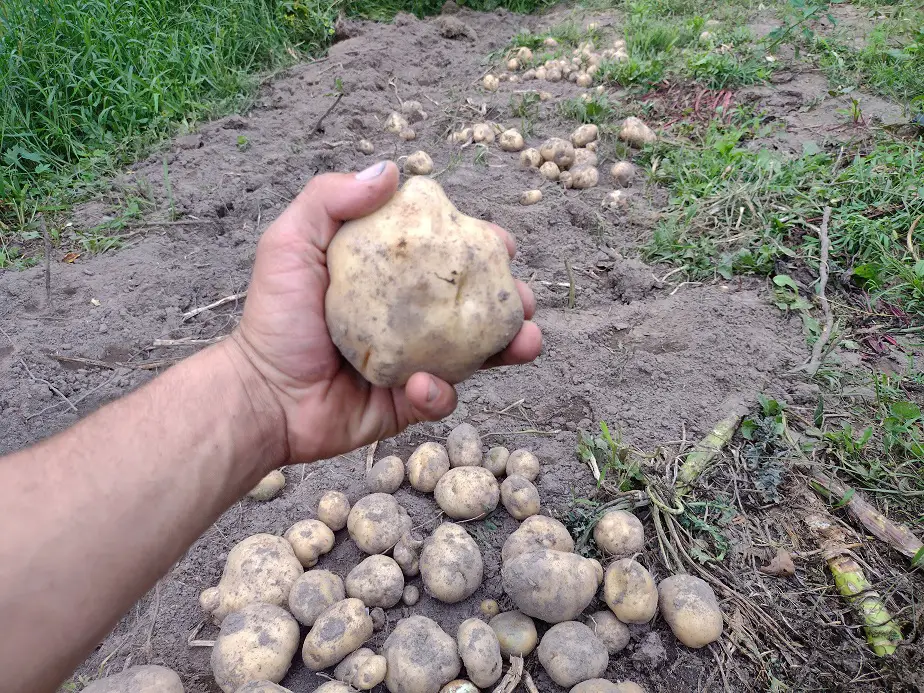
Potatoes
Potatoes are an amazing cool-region crop. They grow well in decent soils, and are another very reliable seller because most people eat potatoes. Potatoes are the most widely eaten vegetable in the US. Potatoes will store for 6 months in good conditions.
Potatoes can be planted and harvested with basic hand tools. Digging potatoes with a shovel is slow work, but I can still dig 1,000 pounds in a day. It’s doable. A small tractor with a middle-row buster, or pull-along potato harvester are often used to harvest potatoes.
Potato plants need to be watched for pests. You can manage pests by hand and with simple soap/water sprays. Potatoes need a lot of nutrients to grow well and will not grow if the nighttime temperature is at or above 70 degrees.

Garden Beets
Beets grow well in decent soil as long as it has even, moderate water. Freshly picked beets are a market favorite at our stand. They grow best in somewhat cool temperatures, but can be planted all summer long in the northern half of the US. If sold within 24 hours of harvest, they are extra sweet and worth a premium.
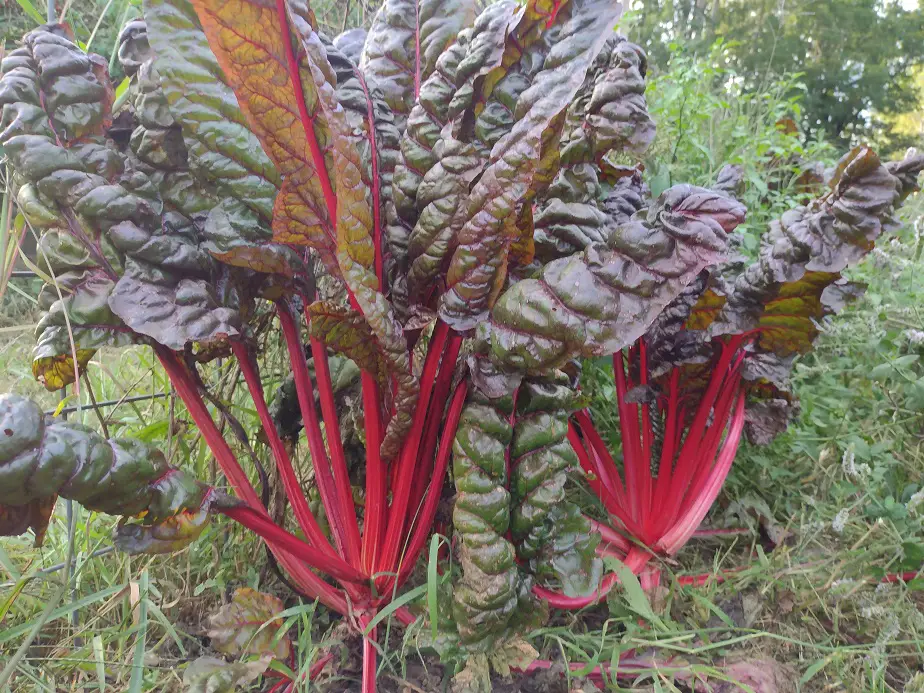
Leafy Greens
Greens like Kale, Chard, and lettuce are easy to grow and harvest without equipment. Lettuce is a cool season crop and doesn’t like daytime temperatures above 75 degrees. Chard and Kale can be started very early in the spring and harvested until winter.
Continuous harvest greens can end up using a lot of soil nutrients over the season, so keep an eye on that. Spinach tends to sell well but is finicky to grow. It won’t sprout over about 65 degrees and will get over-mature when the daytime temperature is in the 70s.
Greens are often plagued early in the spring by flea beetles, which munch tons of tiny holes in the leaves. Keep an eye on that. With chard and kale, damaged leaves are plucked off and will re-grow.
Perennial Herbs
Lavender and mint (including peppermint), may be a great option for the small landholder. They are high-value crops, easy to manage, and often are a very beneficial part of a diversified market plan. They aren’t going to sell in all areas but will do great in others.
Chamomile is another one. Roman chamomile is a perennial, but the more common german chamomile is not. Still, I recommend the german chamomile. German chamomile self-seeds heavily and acts almost like a perennial that way. It’s a very cold-hardy plant too. Just keep the weeds out of it.
Herbs like these can be sold fresh or dried and made into herbal tea blends. That can be a real money maker if you market it well. Weeds are a headache in a thick patch of herbs, Do your wedding as early in the season as you can.

Corn
Corn is fairly easy to grow and while regular field corn isn’t worth much, popcorn and Indian corn can demand quite a premium in your sales. Indian corn can sell for $2/ ear and popcorn can sell for a couple of $1/lb. or four times that if popped.
Don’t forget about cornmeal. Specialty cornmeal from varieties of Indian corn, flint corn, or red corn varieties tends to sell at a good rate. Certainly, something to look into anyways. Heirloom corn is sometimes sellable for high prices as specialty animal feed too.
Sweet corn sells really well pretty much everywhere, as long as you sell it fresh. It’s most valuable when picked the same day as sale. Corn is easy to plant with a push-seeder, can be weeded with a hoe, and picked and shelled by hand. It’s easy, but you have to be sure you can sell it at a decent rate.
Turnips
Turnips are a good cold-tolerant, easy-growing crop. They don’t always sell well in the US. It’s more of a European thing sadly. But, turnips can be a great part of a market plan, especially in a larger metropolitan area. Often, turnips can be sold to high-end restaurants if you can maintain high-quality.
The issue with turnips, and also with radishes, is that they’re very prone to cabbage root maggot. little white grubs that get in the roots will destroy an entire crop. I can’t grow an early crop of either. They’ll be full of worms every time. Later in the season, I can. They would do better in a well-maintained greenhouse.
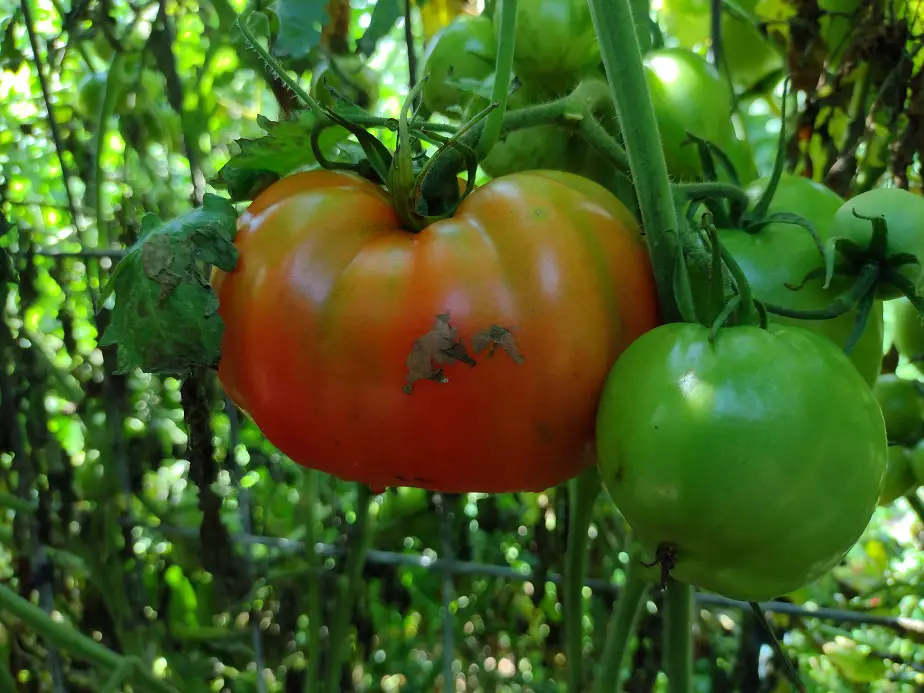
Tomatoes
Tomato plants grow well and the fruits are usually the best seller at a market. But, tomato plants are plagued by disease. Septoria Leaf Spot, often mislabeled blight, hits hard if plants get overgrown or in cool-wet environments. Learn to prune plants, and use basic, non-invasive sprays to deal with it.
Healthy, strong plants will have much fewer issues with disease. Plants grown in rich, natural soil and without too much fertilizer do best. Excess Nitrogen will cause plants to grow larger but will cause the plant’s cells to become weak and more disease susceptible.

Cucumbers
Cucumbers love heat, grow well, and sell well. They don’t wilt too fast after picking as long as they’re kept out of the sun. Fresh cucumbers are my best market seller. Cucumbers need an even water supply and deep, rich soil to keep productive all season long. Watch out for cucumber beetle early in the season.
A cucumber beetle infestation will destroy most of your seedlings if you don’t watch out. The key to good-looking cucumbers really is even water and decent levels of fertilizer. Uneven watering creates messed up-looking fruits. Depending on local laws, you may be able to sell them pickled.
Always consider a way to create a value-added product, such as cucumbers to pickles, jalapenos to hot sauce, or corn to cornmeal. By adding value, you’re creating more potential dollars per acre. when you’re working on smaller amounts of land, adding value often practical sense.
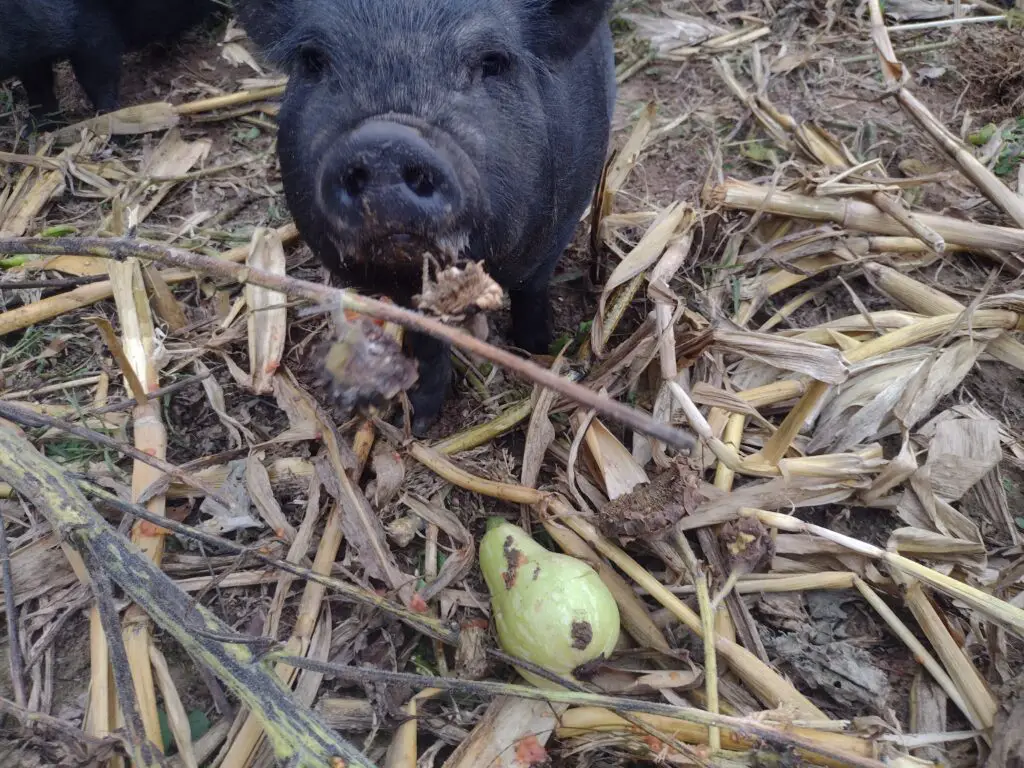
Feed Crops for Small Farms
If you want to grow animal feed, whether for your animals or to sell, that’s a whole different ball game. Growing feed is all about growing calories and nutrition. Feed doesn’t usually sell well, but it can really save you money. I grow a lot of animal feed and it saves us thousands each year.

Turnips
Turnip (also rutabaga) is an old, trusted winter feed crop going back centuries. Both are very winter hardy and can resist a good freeze. In the colonial era, sheep and goats were fed on turnip fields through winter. The snow was shoveled off and the animals could get to them. They also overwinter fairly well.
Turnips can be sown in the fall and will come up in the spring, and keep coming up through the summer as you pick them. Larger, overgrown-looking turnip roots have more starch than small ones. Turnip greens are actually high in protein for ruminants and grazing animals.
Turnips can give animals a belly ache if you feed them too many too quickly. Ease into feeding them. Turnips grow fast and can be planted after a summer crop harvest. They’re easy to save seeds from, and spring planted turnips go to seed if let mature through summer.
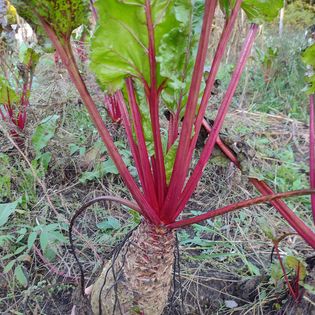
Mangel Beet
Mangel Beet is the traditional fodder beet that came around the early 1700s. It’s equally starchy to turnips but grows larger. Manel is a great food crop, leaves and roots combined, for goats, cows, sheep, horses, and rabbits. My pigs don’t really eat them very well.
Mangels are usually grown all summer long, then used as a fall or winter feed. They go to much after freezing, so they have to be stored well. I’m making a root cellar for storing fodder beets and roots. Beets are bienial, going to seed teh second year. They don’t overwinter here in USDA Zone 5, so I can’t save my own seeds.
Sugar Beet
Sugar beet is a newer version of fodder beet that was bred out of the mangel stock. They are a bit more starchy and have about 20 percent sugar. They are sweet enough that my pigs love them. Sugar beets grow about as big as mangels and are more energy-rich.
Sugar beets are considered a better alternative to corn silage, and are considered about a complete feed for green plant-eating animals. Sugar beet is generally considered much better than turnip and mangels for dairy or meat production because it’s more energy-filled.
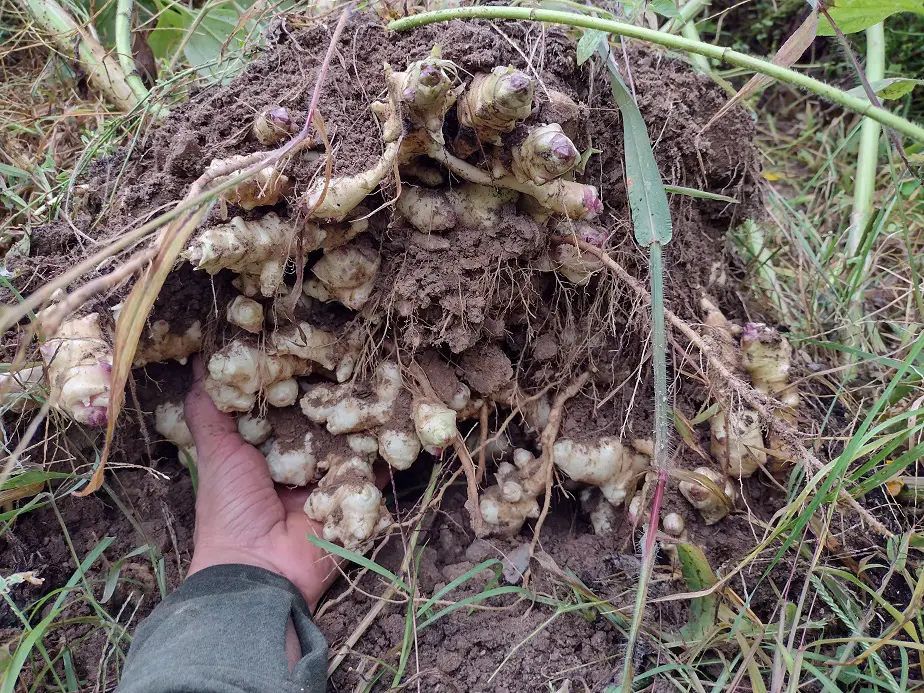
Sunroot (jerusalem artichoke)
Sunroot are super productive, overwinter in USDA zone 4, and are about the same feed value as potatoes. I grow a lot of sunroot for our pigs and rabbits. The tubers are a good source of starch and the plant is perhaps the most drought-hardy of the starchy roots.
They can be grown for the tubers, or the green leaves can be harvested for fresh forage. Being in the sunflower family, the leaves are very high in protein for grazing animals. They are best used in moderation with other feed items.
Sunflower
Sunflowers are grown mostly for their seed heads, but sometimes harvested whole and green as silage. Sunflower seeds are high in protein and in oil. They are about equal, pound for pound, to soybean. Not quite as productive, but they do much better in the event of a drought.
Sunflower heads can be picked and stored whole, and fed to animals for either a protein or calorie boost. I grow sunflower to improve the protein in my pigs’ diet. All livestock can eat sunflower seeds.
Alfalfa
Alfalfa is the most well-rounded hay crop. It’s very high in essential vitamins and minerals, and fairly high in protein. It’s also quite productive in good soil. Alfalfa, both fresh and dried, improves the diet of pretty much all animals. It’s also a very hardy perennial.
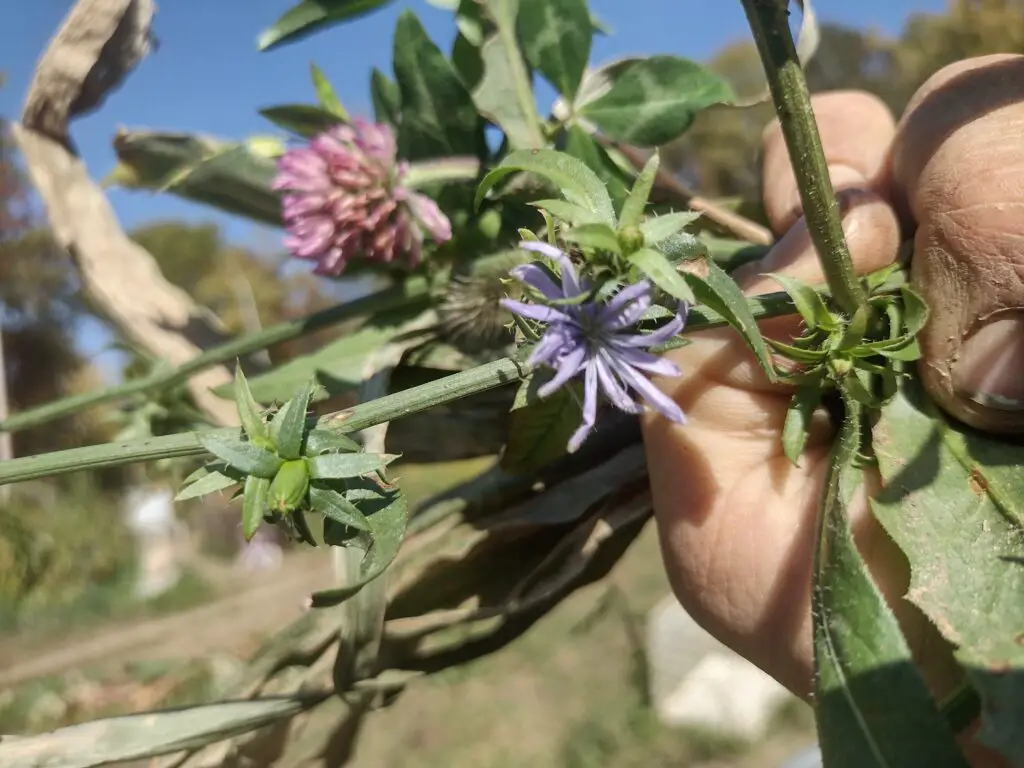
Chickory
Chickory is a super tough plant, it’s fairly productive, and it’s very high in vitamins, minerals, and protein. It’s high in selenium, which all animals need, especially pigs. Chickory helps animals stay healthy, without a doubt. I believe burdock is the same. Chickory seed is available all over the place online.
Most are in a feed plot mix. If you look at a deer feed plot seed mix, pretty much all of them are great for livestock feed. You’ll see things like sunflower, clover, alfalfa, chickory, turnip, and other grasses. Even for omnivorous animals like pigs, green plants are beneficial to their health.
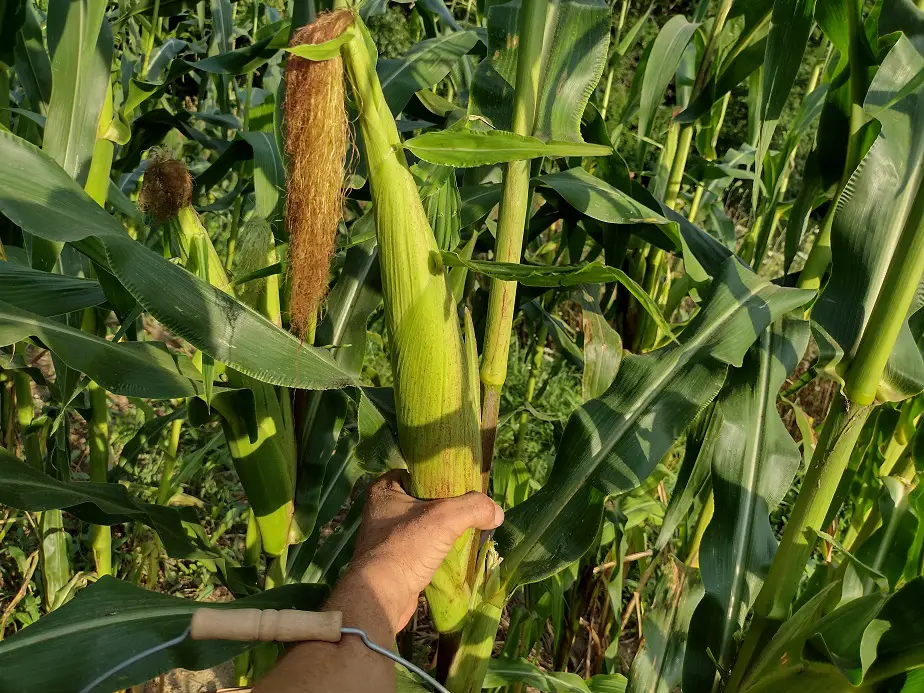
Corn
Let’s not forget about corn. Corn is a concentrated fed item, like sunflower seed. One pound has about 1600 calories. That’s the most concentrated feed I can grow. I can store enough corn in a fairly small area to feed out my pigs over winter.
If you want to grow your own feed for dairy or meat production, you need to grow something that has some calories to it. For us, that’s corn and sunflower. We are growing sugar beet, but they aren’t very calorie-dense. They’re still a beet. A little grain really helps animals gain or give good milk, and helps them a lot in winter.
Related Articles:

